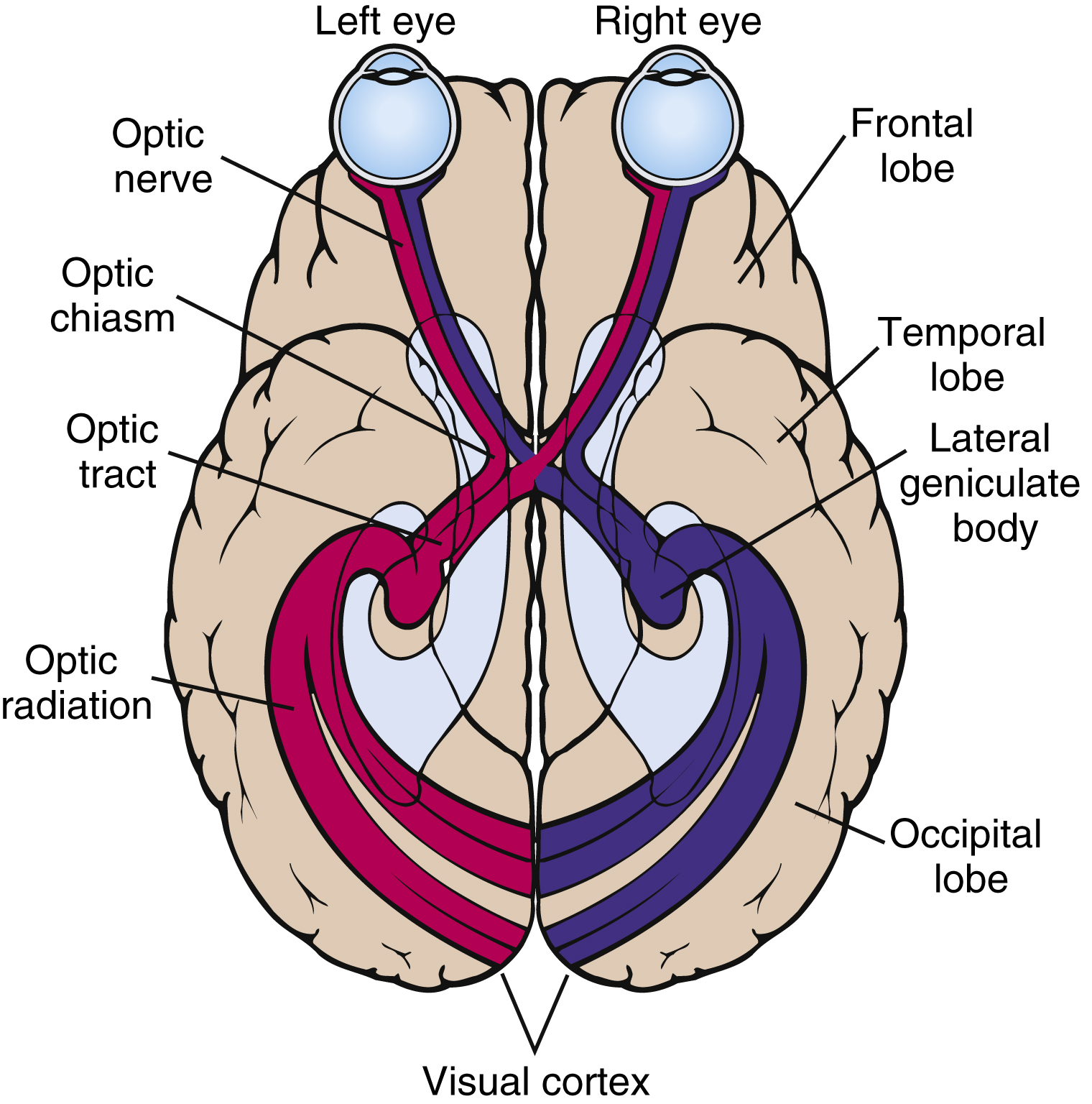visual pathway, a pathway over which a visual sensation is transmitted from the retina to the brain. A pathway consists of an optic nerve, the fibers of an optic nerve traveling through the optic chiasm to the lateral geniculate body of the thalamus, and optic radiations terminating in an occipital lobe. Each optic nerve contains fibers from only one retina. The optic chiasm contains fibers from the nasal parts of the retinas of both eyes; these fibers cross to the opposite side of the brain at the optic chiasm. The fibers from the temporal part of each eye do not cross at the optic chiasm, pass through the lateral geniculate body on the same side of the brain, and continue back to the occipital lobe. Thus the optic tracts, occipital lobe, lateral geniculate bodies of the thalamus, and optic chiasm each contain nerve fibers from both eyes. If the right optic tract were destroyed, a person would lose partial vision in both eyes—the right nasal and the left temporal fields of vision.

